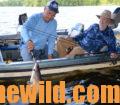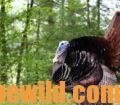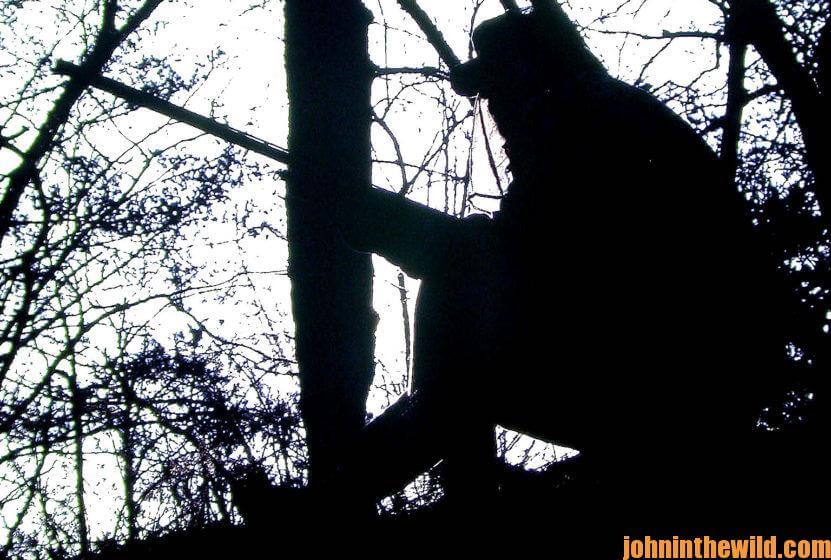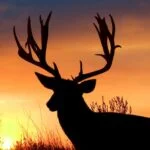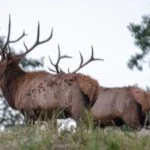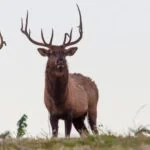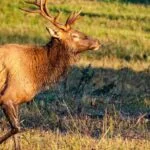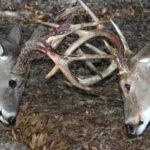Editor’s Note: Some states still have open turkey seasons at this time. Although my home state of Alabama’s season has ended, I know you still can learn plenty of turkey savvy from my longtime friend, 81-year-old J. Wayne Fears of north Alabama, who can’t remember a time when he hasn’t hunted wild turkeys. He started guiding for turkeys in 1975 full-time until about 1985 and then has hunted them part-time ever since. He’s hunted turkeys all over the U.S. and has battled some of the toughest longbeards in the nation. This week we’re learning from Fears about what gobblers have taught him through the years.
 This turkey got its name because it lived in a bend off the Tombigbee River. Old Bend was a bully, a lover and a control freak wrapped-up into one mean gobbler. The first couple of mornings I hunted Old Bend, every time I tried to get to this bird, sloughs blocked my route. As soon as I’d blow my crow call, Old Bend would gobble. However, I knew these sloughs were at least waist-deep high and possibly arm-deep high. After Old Bend would gobble, I would hear hens with him and listen to him gobble as he walked away from me.
This turkey got its name because it lived in a bend off the Tombigbee River. Old Bend was a bully, a lover and a control freak wrapped-up into one mean gobbler. The first couple of mornings I hunted Old Bend, every time I tried to get to this bird, sloughs blocked my route. As soon as I’d blow my crow call, Old Bend would gobble. However, I knew these sloughs were at least waist-deep high and possibly arm-deep high. After Old Bend would gobble, I would hear hens with him and listen to him gobble as he walked away from me.
The third morning, I decided I’d wade through those sloughs and get on the same ground where Old Bend was roosted. When I was about 150 yards from Old Bend’s roost tree, I saw one of the biggest broods of hens I ever had seen with at least 20 hens in that brood. At one point, Old Bend dropped out of his roost tree, helicoptered down to the ground and took all those hens to the other end of the island where he was living. I spent all 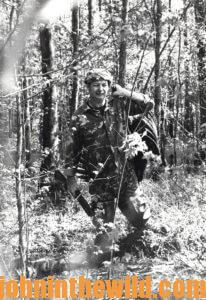 morning trying to call that tough ole bird away from his hens, but he wouldn’t leave them. Finally, totally frustrated, I decided that to bag this bird, I needed to do something totally different.
morning trying to call that tough ole bird away from his hens, but he wouldn’t leave them. Finally, totally frustrated, I decided that to bag this bird, I needed to do something totally different.
As I walked back to camp and crossed three sloughs, I attempted to think of a strategy to take this gobbler that had beat me mentally, but also caused me to get totally wet during the process. I had a history with this bird that went back to the beginning of turkey season. I knew that there were four other gobblers gobbling on that island before Old Bend started gobbling early in the season. However, when Old Bend started gobbling, the four other subordinate gobblers shut up. I also knew that there wasn’t any chance that my clients would be able to harvest the other gobblers on the island without taking Old Bend first.
After realizing that this was not a one-man job, I called a good friend of mine who was an excellent turkey hunter and explained to him that I had a frustrating gobbler down where I was hunting, and that the only way I thought we’d take him was by getting up early in the morning, way before daylight, wade across three soughs and call him from opposite ends of the island. I told him that this bird was sitting on a large water oak tree, I asked him to use his gobble box on one end of the 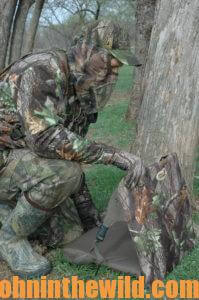 island, while I use hen calls on the other end. “We may not kill Old Bend, but I promise you that we’ll frustrate him. I believe that Old Bend will be forced to come to one of us when he flies out of the tree. He’ll make the decision about which way to go, depending on whether he wants to fight or make love to a hen at first light. With all the hens he’s got, he may be willing to come fight with you to keep from losing his harem, or he may fly to me, expecting to pick up a new hen to add to his harem. That Old Bend will have to make one hard choice while he’s standing on that limb and gobbling.”
island, while I use hen calls on the other end. “We may not kill Old Bend, but I promise you that we’ll frustrate him. I believe that Old Bend will be forced to come to one of us when he flies out of the tree. He’ll make the decision about which way to go, depending on whether he wants to fight or make love to a hen at first light. With all the hens he’s got, he may be willing to come fight with you to keep from losing his harem, or he may fly to me, expecting to pick up a new hen to add to his harem. That Old Bend will have to make one hard choice while he’s standing on that limb and gobbling.”
So that morning, long before daylight, my buddy and I waded through those sloughs to get to the island to try to take Old Bend. My hunting buddy went to the lower end of the island, while I went to the upper end to set-up and wait for daylight. When the sun peeped out from under the covers of darkness, Old Bend cranked-up and began to gobble. The bird was double and triple gobbling because he was really fired-up to mate. As the morning skies lightened, a few hens flew down. Hearing the sounds of their wings and an occasional flydown cackle, my hunting partner began to gobble with his gobble box. Every time my friend gobbled loudly, I would yelp softly on the other side of Old Bend’s roost tree. That bird would double and triple gobble at my friend who was talking to him on his gobble box, and when I started soft calling, he’d turn around on the limb and gobble at me.
Old Bend was still in the tree well after first light, and the game of tug of war continued with my friend and me both talking to Old Bend like a hen and a gobbler. One of the hens that was roosted close to Old Bend had stayed in her tree well after daylight. Finally, she pitched out of the tree and landed almost on top of my feet. When she hit the ground, she was totally out of control and crashed into my ribs. I was well-camouflaged and had a natural blind built around me, so she didn’t have a clue of what she ran into, but she quickly walked off, putting like she had lost her mind. Old Bend didn’t pay any attention to her putting and just kept gobbling like he meant for her to come back close to him.
My partner and I continued talking to the bird with both the gobble box and soft hen yelping. Eventually, Old Bend dropped down from his roost tree and started walking toward my friend using the gobble box. I did some soft yelps, he’d spin around and start walking toward me, and then he’d hear the gobble box, spin around and face the opposite direction.
Don’t forget that Old Bend had his harem of hens surrounding him when he was on the ground. I knew I couldn’t move at all because those hens were so close that they’d see me, spook and take Old Bend away with them. Finally, after I’d just given a few soft yelps, Old Bend turned around and started marching directly toward me with four of his hens. When he was within 30 yards, I had the bead of my 12-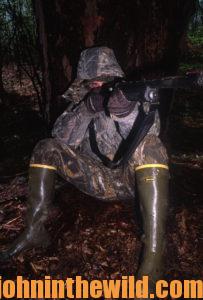 gauge pointed right at his wattles and squeezed the trigger. The only thing I could think of was “That ole bird that caused me to have to get wet on two consecutive mornings finally went down in a heap of feathers.”
gauge pointed right at his wattles and squeezed the trigger. The only thing I could think of was “That ole bird that caused me to have to get wet on two consecutive mornings finally went down in a heap of feathers.”
Reflecting back on the hunt for Old Bend, this was one of the most exciting turkey hunts I ever had been on, since my buddy and I called for about an hour or two to convince Old Bend to finally come toward me within gun range. However, the biggest surprise of the hunt for Old Bend was when I hung him up by his feet to weigh him. He only weighed 14 pounds and almost didn’t have any feathers on his breast. His spurs were less than an inch long and his beard was 11-inches long. I learned later, after I took Old Bend, that the other guides heard seven more gobblers gobbling on that island.
What I Learned from Old Bend:
* A gobbler with a big harem of hens means you must get really creative and come up with a unique tactic that no one has probably tried on that bird before.
* Many times, when you’re hunting bad birds, the only way to harvest that bird is to put your ego in your back pocket and take another hunter with you, realizing the other hunter will have just as good of a chance to harvest the bird as you have.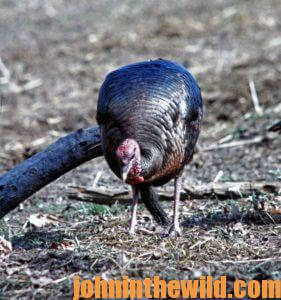
* An tom like Old Bend can be confused when he has to make a choice between fighting another gobbler or picking up a new hen for his harem. But, if you can keep him confused, you or your hunting buddy may have a chance to take a bird like this.
* A large harem of hens surrounding a gobbler shouldn’t be an excuse for not hunting the turkey. The morning I took Old Bend, he had 20 or more hens all around him, and when he came to me, all of those hens were around me. However, when I heard Old Bend coming, and I knew the direction he was coming from, I got my shotgun on my knee. Then I wouldn’t have to move when Old Bend came within range.
* I also learned that if you identify a boss gobbler in an area, you need to try and take him early in the season. Then the other gobblers in that same area can continue to gobble until the end of the season.
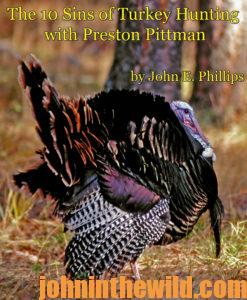 To learn more about turkey hunting, check out John E. Phillips’s book “The 10 Sins of Turkey Hunting with Preston Pittman” at http://amzn.to/14BdFMY, available in Kindle version.
To learn more about turkey hunting, check out John E. Phillips’s book “The 10 Sins of Turkey Hunting with Preston Pittman” at http://amzn.to/14BdFMY, available in Kindle version.
Tomorrow: Hunting the Reincarnation Turkey

